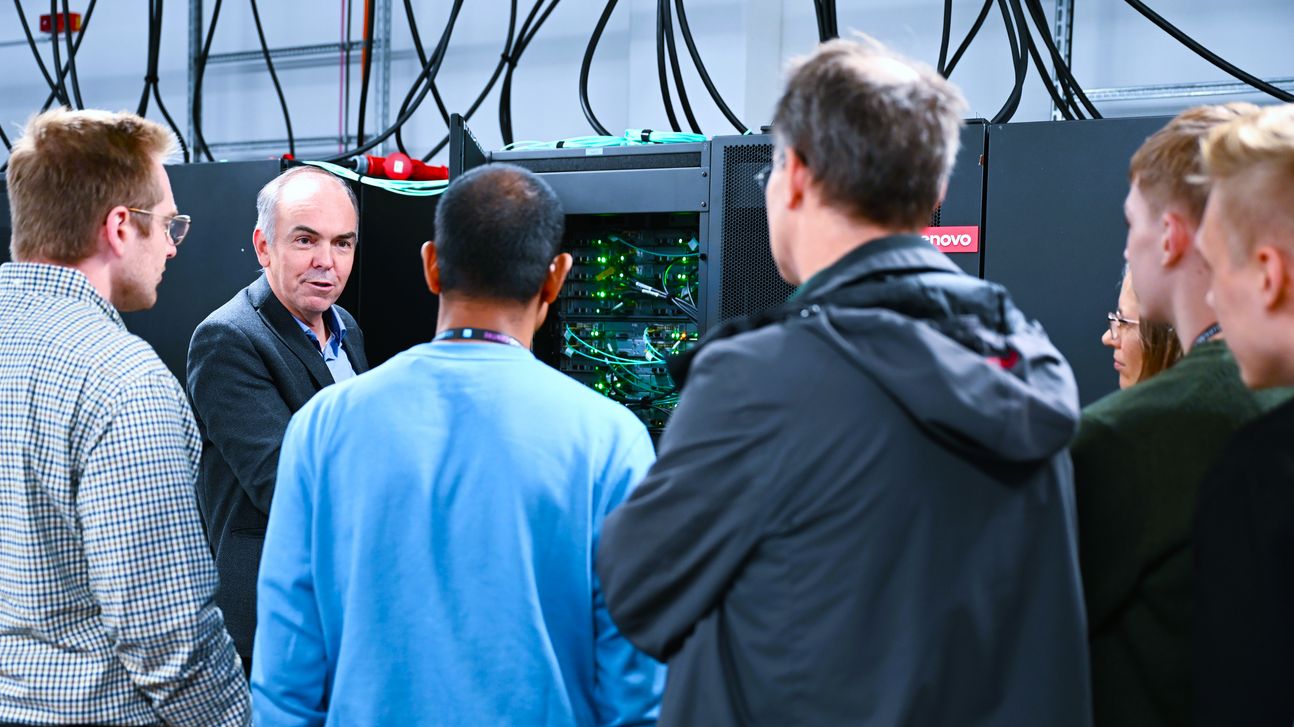60 booked-out places and an equally long waiting list: On Wednesday evening, the LRZ was delighted to see such great public interest in taking a look behind the scenes of a high-performance computing center. To kick things off, Prof. Dieter Kranzlmüller, Director of the LRZ, presented the structure, areas of responsibility, and research fields of the computing center. The audience was already impressed by the explanations of the building's architecture, the cooling of the computers, and the power consumption—the annual electricity costs of an average household are roughly equivalent to those of the LRZ's hourly operation. And the impressive story continued with the heart—or rather the brain—of the LRZ, the computers: the machines operated here are among the most powerful in Europe. They are used to research the formation of stars from gas clouds or to simulate blood flow in the smallest arteries in the brain.
Where high-performance computers reach their limits, the LRZ is researching the integration of quantum computers as part of Munich Quantum Valley (MQV). Prof. Kranzlmüller sees this primarily as a complement to the LRZ's fundamental approach: What does it take to provide the best computers for a wide variety of problems? “The supercomputer will continue to do most of the work,” he explained, “but it will ask the quantum computer for help.” Supercomputers will receive help with problems that classical computers cannot solve, but which quantum computers with their unique computing methods can handle well. What these problems are and how the systems can work together smoothly is part of the current research at MQV. The director of the LRZ explained the different ways in which classical computers and quantum computers work using the example of a four-digit code that needs to be cracked. While a classical computer has to test all 10,000 possibilities one after the other, a quantum computer can check all options simultaneously, so to speak, and thus arrive at the solution more quickly. Filling out Sudoku puzzles is also a good example for understanding how a quantum computer works – and writing the corresponding program for this is a task that his students enjoy tinkering with. In addition to these games, however, the LRZ is of course primarily concerned with solving relevant questions from research and industry in the future. Prof. Kranzlmüller therefore considers it particularly important to emphasize that this requires not only the best computers, but also the brightest minds – both of which are found at the LRZ.
After a brief safety briefing—after all, the visitors were about to view sensitive infrastructure in operation—they split into small groups and entered the “computer cube” to see all the machines they had heard about in the lecture. The participants quickly understood the suggestion to use earplugs when they entered the first room with the server racks, which house computers whose cooling hums loudly. These include systems such as the SuperMUC-NG supercomputer, which are cooled with warm water—an innovation by the LRZ that increases the energy efficiency and sustainability of its operations. The small groups on the tour gave visitors ample opportunity to ask many questions about supercomputers and quantum computing. And so the conclusion was extremely positive across the board. “That was really great! You don't usually get to see something like that,” said one participant enthusiastically, and those around him nodded in agreement.
